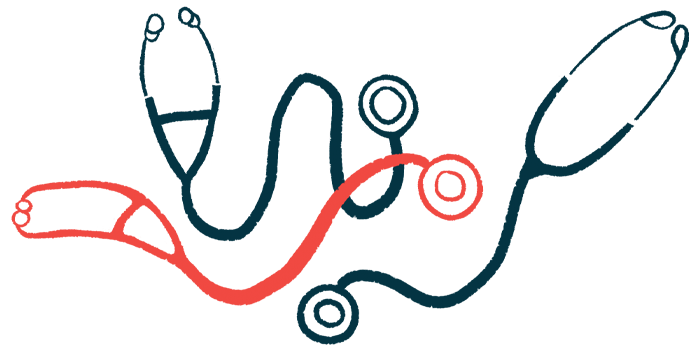Healthcare costs decline after PAH diagnosis, study says
Costs, life quality worse for those at higher risk, researchers find

Patients with an intermediate to high risk of mortality in the first year following a pulmonary arterial hypertension (PAH) diagnosis have poorer health-related quality of life than those at lower risk, according to a study in England.
Those costs were reduced following diagnosis, mainly due to less spending related to hospitalizations, accidents, and emergency room visits.
Overall, the findings show how a PAH diagnosis “regardless of risk category, appears to reduce costly HCRU [healthcare resource utilization], an important consideration for healthcare systems,” the researchers wrote.
The study, “Association of risk assessment at diagnosis with healthcare resource utilization and health-related quality of life outcomes in pulmonary arterial hypertension,” was published in Pulmonary Circulation.
In PAH, the narrowing of the pulmonary arteries, the blood vessels that supply the lungs, leads to an increase in blood pressure. This forces the heart to work harder to pump blood through to the lungs, causing shortness of breath, chest pain, and fatigue. While early treatment increases the chances for better outcomes, patients can be diagnosed at distinct stages of disease progression.
Disease severity affects costs, life quality
The researchers, from the University of Sheffield, Actelion Pharmaceuticals, and Iqvia set out to assess how risk status at the time of PAH diagnosis affects healthcare resource use, costs, and health-related quality of life (HRQoL)
They analyzed data from adults with PAH diagnosed at the Sheffield Pulmonary Vascular Disease Unit between 2012 and 2019. The data were linked with the National Health Service Hospital Episode Statistics database. Participants were followed for at least 90 days.
Median follow-up after diagnosis was 2.1 years for patients in the Sheffield database and 2.4 years for the NHS group. Diagnosis came at a median age of 61, with idiopathic (unknown cause) or heritable PAH diagnosed in 29% of the participants. The remaining patients had other forms of PAH.
Of 1,509 patients assessed for risk of death within the first year of diagnosis, 72 patients (5%) were deemed to have a low risk, 941 (62%) were classified as intermediate risk, and 496 patients (33%) had a high risk. A total of 663 (39%) of patients died during the study period.
The most common respiratory disorders present in the five years preceding the PAH diagnosis were chronic obstructive pulmonary disease (COPD) and other obstructive lung disease, as well as asthma. Hypertension (high blood pressure) was the most common heart-related disorder, followed by heart failure.
Both respiratory and heart-related conditions were more prevalent among high-risk patients, with kidney and heart failure being particularly more common in that group. Hypertension was the only condition detected among patients in the low-risk group.
The rate of in-hospital (more than one day) admissions was similar before and after PH diagnosis in both the intermediate and high-risk groups. The rate remained low in the low-risk group. In the first year after diagnosis, patients remained hospitalized for an overall median of four days: 2.8 days for the low-risk group, 3.3 days for those at intermediate risk, and six days for high-risk patients.
No differences among risk groups were observed in the numbers of same‐day spells (same admission and discharge dates) or outpatient consultations for any cause before and after diagnosis.
No patients in the high-risk group had hospital visits for accident or emergency following diagnosis. Before diagnosis, high-risk patients made a median of three visits for those reasons.
Measuring costs after PAH diagnosis
In the first year after diagnosis, median healthcare costs per patient due to inpatient hospitalizations were the highest among high-risk participants (£877, or about $1,132) compared with those in the intermediate- and low-risk groups, which required no in-patient hospitalization. At three years post diagnosis, all‐cause healthcare resource use was similar across risk groups.
Among patients with HRQoL evaluations at diagnosis and at one-year follow-up, those in the low-risk group scored better than those in the other groups, as shown by lower scores in a PH-specific questionnaire called EmPHasis‐10. Only the high-risk group had an improvement in HRQoL score, from 36 pre-diagnosis to 29 post-diagnosis.
Patients’ survival probability was always higher in the low-risk group than in the other groups one, three, and five years after diagnosis. In the first year, all patients in the low-risk group were alive, compared with 92% in the intermediate risk group and 74% in the high-risk group.
Overall, the findings “add to the literature for PAH, corroborating that intermediate‐ and high‐risk patients with PAH have poor survival outcomes and poor HRQoL, and demonstrating a pattern of decreased per‐patient HCRU postdiagnosis, particularly for inpatient hospitalizations and A&E [accident and emergency] visits,” the researchers wrote.









